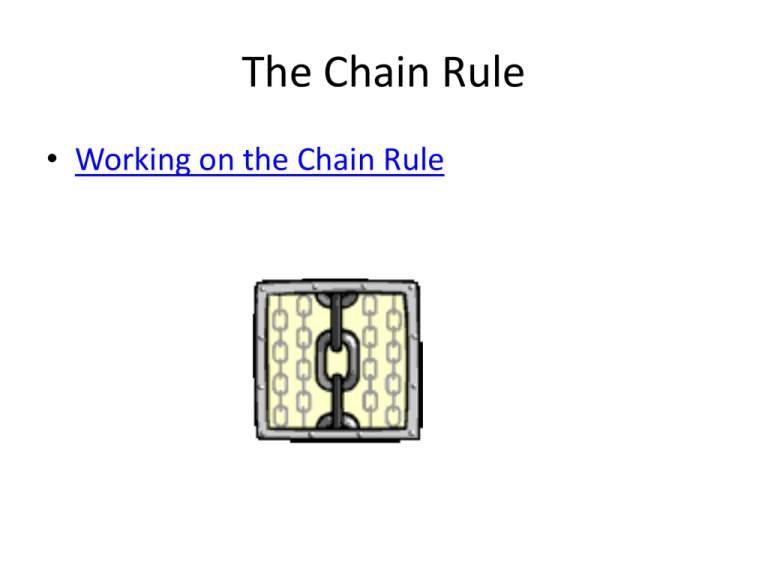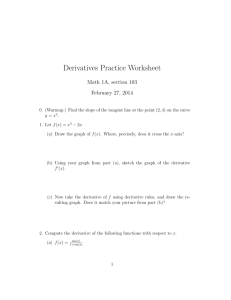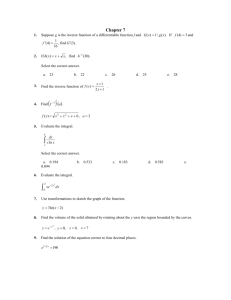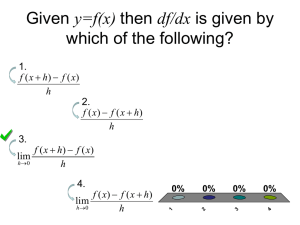The Chain Rule
advertisement

The Chain Rule • Working on the Chain Rule Review of Derivative Rules • Using Limits: Power Rule • If f(x) = Product Rule Quotient Rule Why use the chain rule? • The previous rules work well to take derivatives of functions such as • How do you best find a derivative of an equation such as The Chain Rule • The chain rule is used to calculate derivatives of composite functions, such as f(g(x)). • Ex: Let f(x)= and • Therefore, f(g(x))= • Obviously, it would be difficult to expand the above function. The best way to calculate the derivative is by use of the chain rule. Chain Rule (cont) • The derivative of a composite function, f(g)x)), is found by multiplying the derivative of f(g(x)) by the derivative of g(x). • Or, f’(g(x))(g’(x)) • In our example, , we obtain • This is the general power rule of the chain rule Other applications of the chain rule • To find f’(x) when f(x)=sin , f’(x)= (cos )(2x) • To find f’(x) when f(x)= rewrite the equation as • Then, use the general power rule of the chain rule to obtain Trig and the Chain Rule • • • • • • Let f(x)=sin u. f’(x)=(cos u)u’ Ex: f(x)=sin2x, f’(x)=cos2x(2)=2cos2x Find the following derivatives: A. f(x)=cos(x-1) B. f(x)=cos(2x) C. f(x)=sin( 2x ) 2 • A. f(x) = cos(x-1) f’(x) = -sin(x-1) • B. f(x) = cos(2x) f’(x) = -2sin(2x) • C. f(x) = sin(2x2 ) f’(x) = 4xcos(2x ) 2 Combining Chain Rule • Let f(x)=sin(2x)cos(2x). Find f’(x) (2x) Combine product rule and chain rule • • • • Let h(x)=sin(2x)cos(2x). Find h’(x) From product rule, d/dx f(x)g(x)= f’(x)g(x) + f(x)g’(x) From above, if f(x)=sin(2x) and g(x)=cos(2x), then f’(x)=2cos(2x) and g’(x)=-2sin(2x) • Therefore, h’(x)=(2cos(2x))(cos(2x)) + (sin(2x))(-2sin(2x)) = (2x) (2x) Combine quotient rule and chain rule











